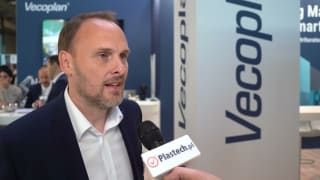Wittmann introduced an energy rating standard developed for dry air dryers
The Wittmann Drymax ER60 incorporating Wittmann`s segment wheel technology provided a welcome result. Compared to the honeycomb wheel dryer, the differences in the construction detail were evident by the lower energy rating. Higher energy efficiency resulted from the use of desiccant beds versus the desiccant surface inside the honeycomb wheel. The constant dew point and the compact construction offered good performance under the extreme drying demands.
Based on a specified set of rating values it is possible to calculate the energy consumption for the actual resin drying beginning with the resin during the heat-up phase where the energy is dependent on the resin type, fill-in temperature and drying temperature. The heat-up energy can be determined independently of the drying equipment. With the typical fill-in temperature and drying temperature we can determine some important heat-up energy.
The total energy consumed for drying resin consists of the heat-up energy for the resin and the basic load of the dryer. In this example, we will compare the results for drying 60 lbs. of ABS per hour with a Drymax D60 versus a honeycomb wheel dryer.
The Honeycomb Dryer had the following energy consumption: Basic Load 2.4 kW + Heat up the resin 60 lbs./hr. * 9.0 kWh/1,000 lbs. = 2.94 kW or 0.049 kWh per lb of ABS.
The honeycomb dryer in fact required 70% more energy for the same drying demand! Thus, it is important to look at the real energy consumption and not only the 50% energy savings claim as suggested by many advertisements.
Wittmann invites processors interested in determining the energy rating for their specific resin dryer to bring it to their test facility in Groß-Umstadt near Frankfurt/M (Germany). The laboratory is equipped to measure the individual energy rating so the user can accurately determine the total energy savings between dryers.
Wittmann is the only manufacturer offering plastic processors worldwide a complete range of innovative robot automation and injection molding machine technology, along with auxiliary equipment for material conveying, blending, drying, granulating, heating and cooling - for individual work cells to fully integrated system solutions. Products include sprue pickers, robots, end-of-arm-tooling (EOATs), degators and complete automation work cells; injection molding machines, fully integrated materials handling systems with dryers, blenders, vacuum loaders and receivers, railcar unloaders, silos, pumps, central filters, tilt tables and surge hoppers; granulators; water flow regulators and mold temperature controllers.
- Pages:
- 1
- 2


